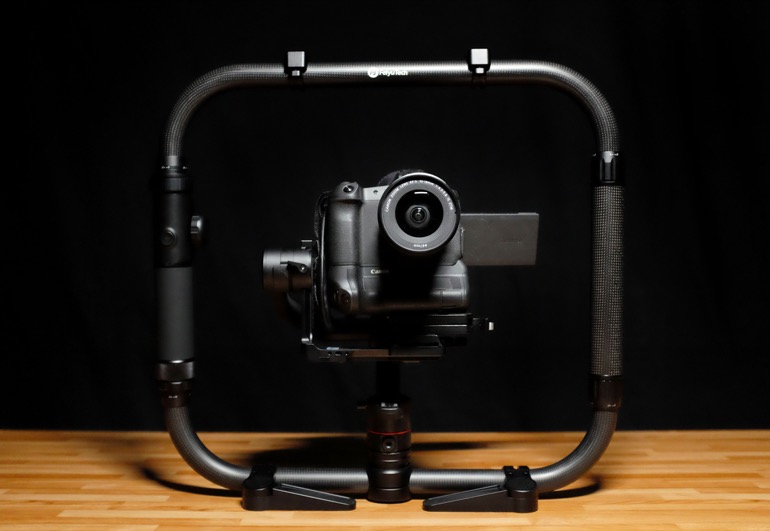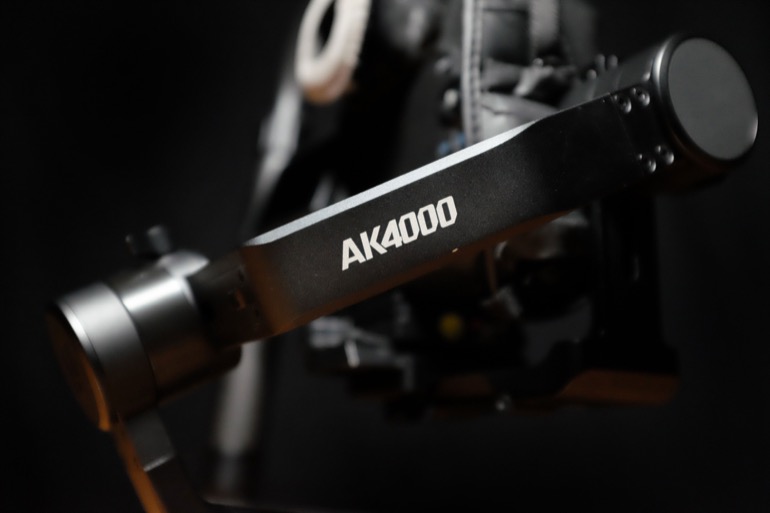Feiyu AK4000 Gimbal with Dual Handle Ring Review
The current Feiyu-Tech DSLR gimbals are an interesting offering in a gimbal landscape that is largely flat right now. The AK2000, AK4000, and the new AK4500 are single-handle gimbals with a special treat: they can all be used with the Feiyu Ring-Style Dual Handle Grip.
Why is the ring handle important? It’s what separates these Feiyu gimbals from the wide range of competitors in the sub $1k gimbal market. The fig-rig handles completely transform these gimbals from standard offerings to unique products that we think deserve highlighting.
We originally reported on the Feiyu AK2000 and AK4000 Gimbal Stabilizers before they were released, so we were excited for an opportunity to try one out. For this review, we take a look at the Feiyu AK4000 with the dual handle ring accessory. However, it’s important to note the ring handles work with the Feiyu AK2000 as well as the new Feiyu AK4500 too - so look for the model that is the best size for your camera.
Feiyu AK SERIES Gimbal Specs
The three gimbals in Feiyu’s AK line are all similar but have a few important differences. Here’s a basic overview of their offerings.
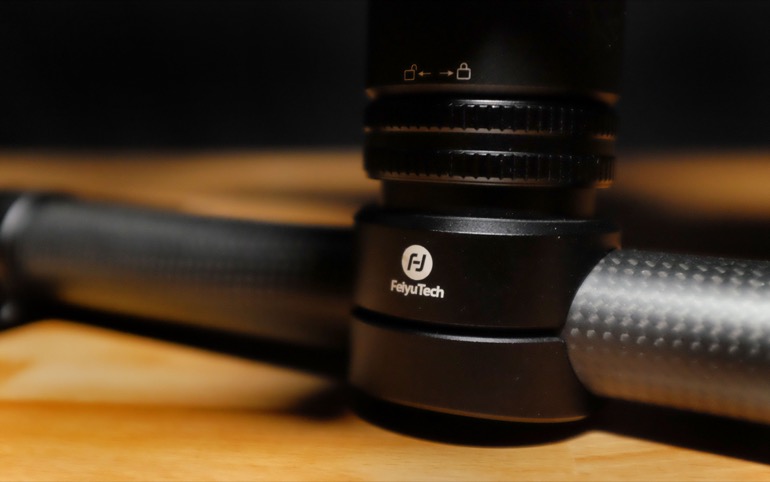
Feiyu AK4000
- 8.8 lb Payload
- 360 degrees pan and roll, 230 degrees tilt
- Angled rear motor to allow better view of the camera screen
- Multifunction wheel to manually pan or tilt, plus control camera focus and zoom with compatible cameras
- Touchscreen LCD for settings and fine tuning
- Joystick to manually pan and tilt
- Feiyu ON iOS and Android app for customization and remote control via Bluetooth
- Ability to control the gimbal and camera via WiFi and compatible devices
- Included extension rod to enable more comfortable holding in single-handle mode
- Manfrotto PL501-compatible quick release plate
- Magnetic encoder motor with 2000 adjustments per second
- 12 hour battery life with four 18650 Lithium-Polymer batteries (2200mAH each)
- Tripod legs and carrying case included
- 1/4-20” threads available for mounting an external monitor
- Made of aluminum and weighs 3.5 lbs with batteries.
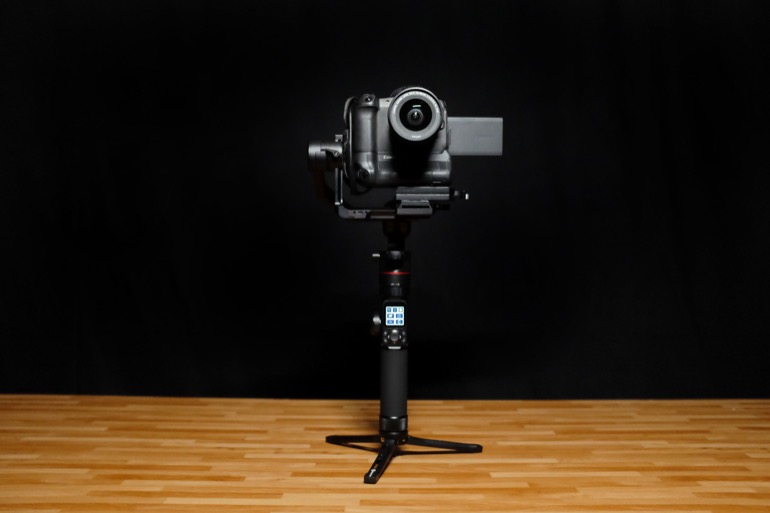
Feiyu AK2000
The Feiyu AK2000 is identical to the AK4000 in every way except its payload is 6lbs, it’s a little cheaper, and it doesn’t come with the extension rod. It also offers full 360 degree rotation in every direction, including tilt.
The AK2000 is aluminum and weighs about 3 lbs.
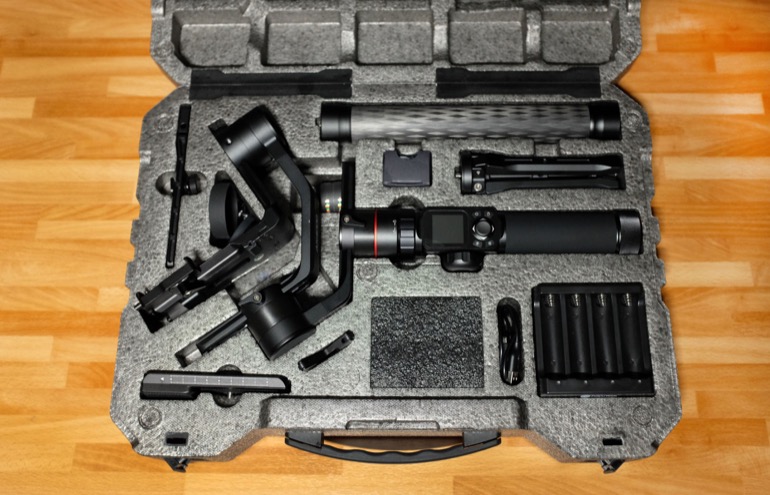
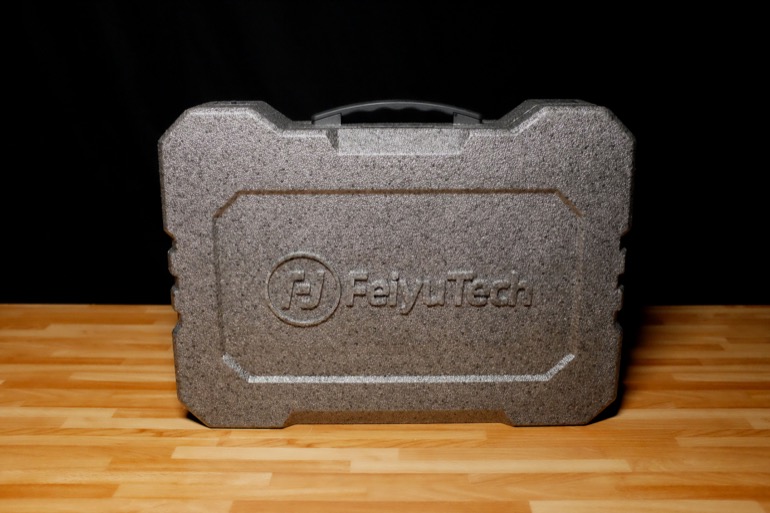
Feiyu AK4500
New to the lineup is the AK4500, which has a slightly larger payload of 10.1 pounds. The quick release plate is ARCA Swiss compatible, and it also brings a few new features, such as a versatile dual handle grip that allows you to hold it with a second hand at the back.
Along with the new AK4500, the control screen adds an Inception mode, which we all know by now is a 360 degree rotating camera that moves toward or away from the subject, as well as a Shadow Hunter mode, which is what Feiyu calls its rapid follow mode.
The AK4500 is made out of aluminum and weighs about 4 lbs.
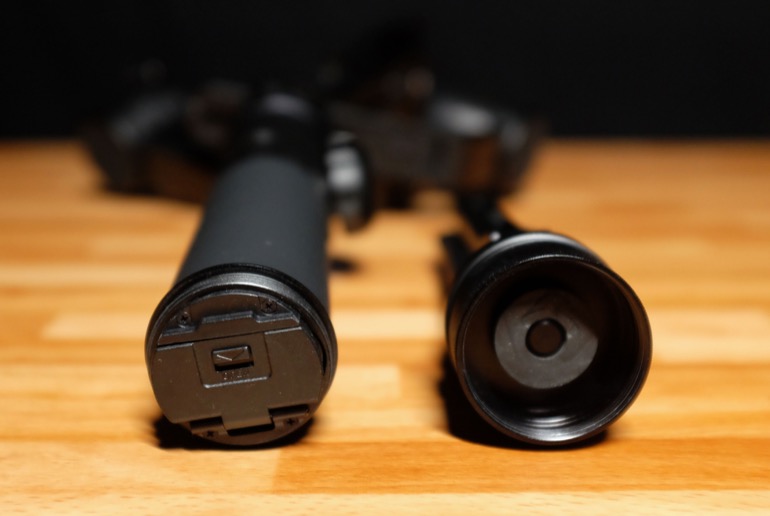
To access the battery you have to unscrew the bottom part of the gimbal
Feiyu Carbon Fiber Ring-Style Grip Handle
The star of the AK series of gimbals is the dual handle accessory. It only weighs about 2 lbs thanks to the carbon fiber construction, and it’s about 20 inches from side to side.
The way to attach the ring to the gimbal is fairly easy, but it takes a couple times to figure out. The single handle gimbal becomes the right hand of the rig, and the left side is an empty tube. At each connection point there is an electronic connection, and a thread to tighten each piece together.
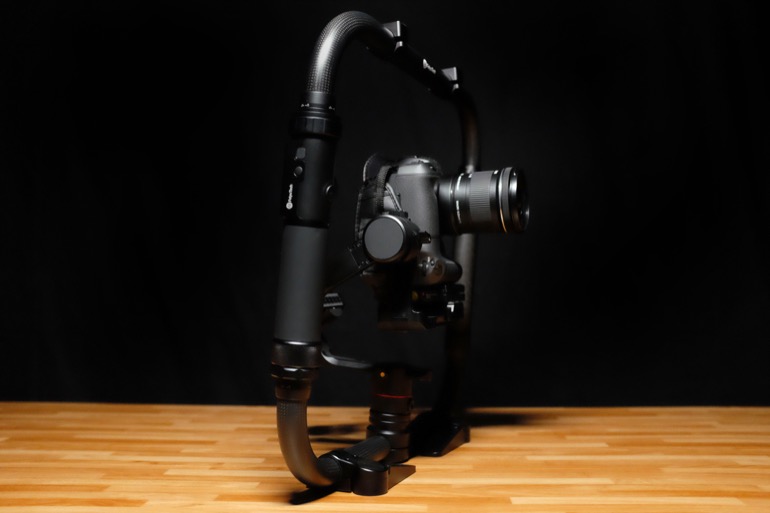
At the base are two feet that make it easy to set the rig down before, after, or between takes, and while you’re balancing the camera. The tube is 35mm and 26mm, so you can clamp accessories with a super clamp, or you can use one of the handy cold shoes to add a monitor or microphone to the top of the rings.
Feiyu AK4000 Review
Ok so now that we have the basic info out of the way, what do we actually think of this gimbal?
For the most part, we've been using the AK4000 model with a Canon EOS R / battery grip / 10-18mm lens / Manfrotto 394 quick release. We also balanced and used the Canon C100 on it, as well as other small DSLRs and Mirrorless cams.
First, the balancing was not bad at all. Many single handle gimbals tend to max out in the length of the arms, so even though the payload capacity can be high, often you’ll find cameras with battery grips to be so tall and heavy that you physically can’t move them low enough to balance.
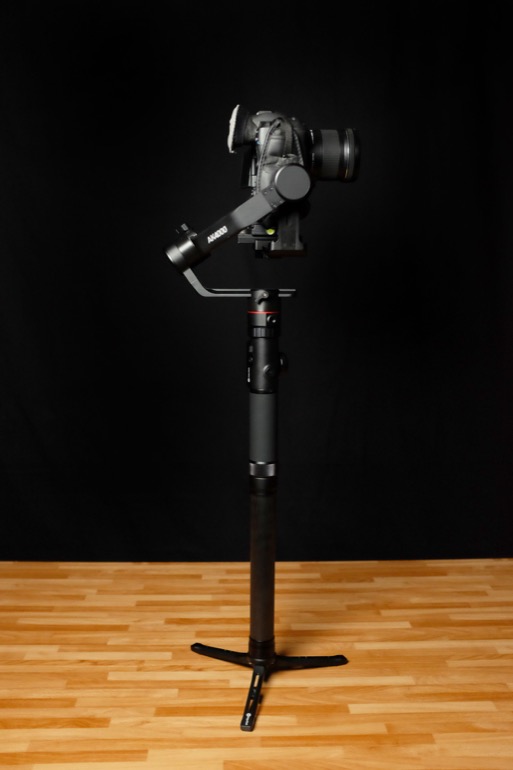
On the AK4000, we found there was adequate space to move cameras for proper balancing, and the knobs all tightened well enough that we had no fear of them coming loose during an active shoot. The 3 axis were also forgiving enough that you could be a little off with balancing and you’d still be fine, so you don’t need absolute precision.
One of the nice features with the AK gimbals is the tilt motor is on the right side of the camera, so you can flip out the LCD screen to the left and have it easily viewable. The gimbal’s angled rear motor also helps you see the camera screen clearly.

This has been a huge pain with many gimbals of the last few years - leading many shooters to have to use external monitors to see what they’re shooting. And while a monitor is certainly nice, it’s also quite cumbersome, adds additional weight and accessories, and is often a failing point in a gimbal rig.
Once you turn the AK4000 on, you can setup the initial tuning and motor speed within the main touchable LCD screen. We didn’t have to make any adjustments to our motor strength, so the default settings were fine. But the main setting that you do have to change is from HF mode to TF. Essentially, the gimbal has several locked-off or open roll settings, which enable you to shoot straight shots without the gimbal tilting, or you can lock the roll axis so that it follows the camera rather than balancing along the horizon.
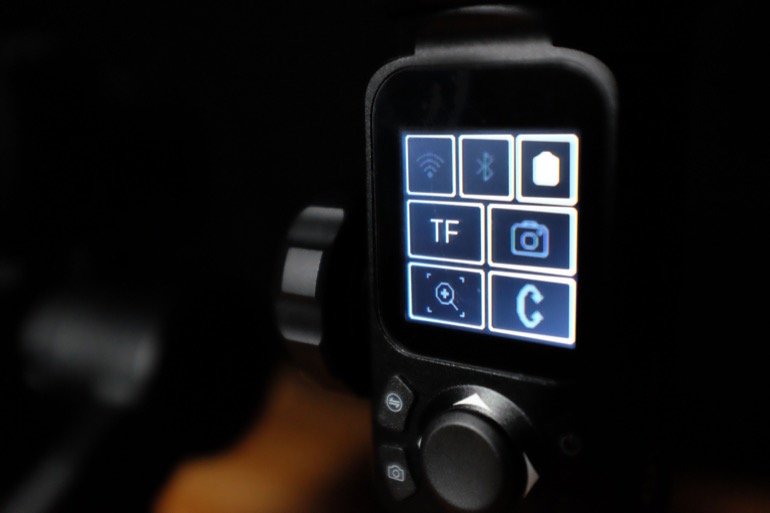
In our experience, all the locked off settings were nice but we hardly ever used them. If you need to shoot a push-in or pull-out shot, it’s easy enough to just hold the rig steady while you walk forward or backward. So, we had our gimbal set to TF - or follow mode - during most shoots. Unfortunately each time you turn on the gimbal you have to switch from HF to TF.
The other setting we did end up changing was the follow speed. We like to maximize the cinematic look of gimbal shots, even if that means the gimbal follows too slow around corners. Slow and steady pans and tilts are the key to making shots look elegant rather than bouncy.
Even with slowing down the follow speed, we did find the gimbal sensitivity a little too high, especially in the tilt speed. It just moves a little too fast, so you have to be extra careful with your hand movements. However, this is common with most encoder gimbals compared to the older motors.
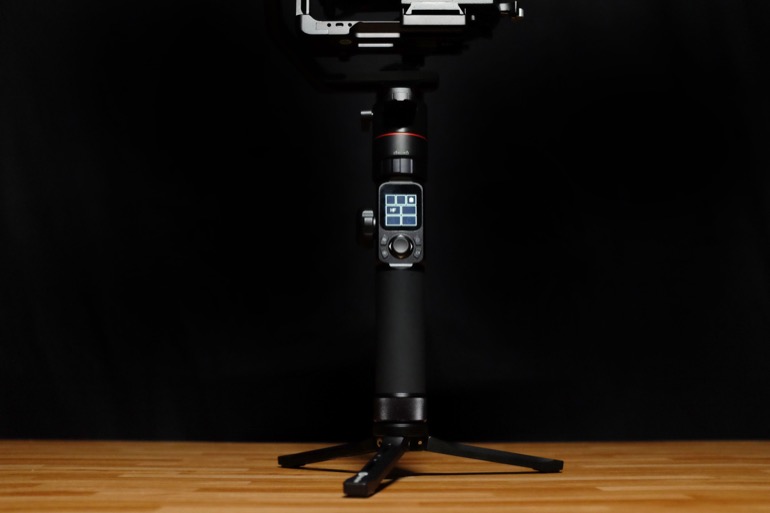
The encoder motors are super strong, allowing you to grab the camera or touch it to make adjustments - even rotate it to fix the horizon - and the gimbal motors won’t hardly buzz or react. With older gimbals, if you as much as looked at them they would start to spin out of control. The downside with this extra strength is that these motors respond quickly to motion, sometimes too quickly.
Holding the AK4000 with a 5lb camera rig can be a little challenging for long durations, so the included extension rod is certainly helpful, as are the tripod legs which you can use to brace against your body. The legs are a must have for being able to set the camera down before or after a shot, and while balancing the camera.
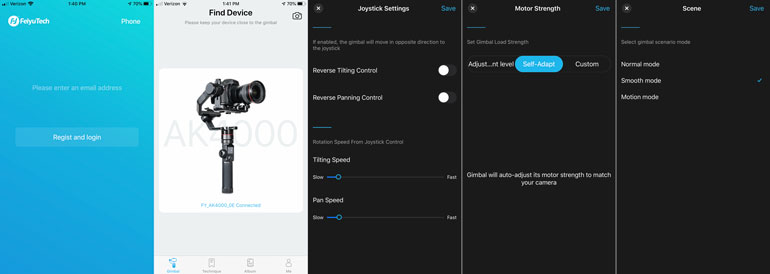
Finally, like many gimbals introduced in the last year or so, the Feiyu AK series has some great bonus features, like a follow focus accessory, timelapse and motionlapse, and camera control with supported cameras. There’s also an app that allows for initial customization and factory reset, and some of these bonus shooting modes. And there’s also the ability to control the gimbal and camera via WiFi.
But honestly we’re not that concerned with these bonus features. The main purpose of a gimbal is to provide you a stabilizer. You can control your camera by simply reaching for it - it’s not like you’re on a major Hollywood set where you have a crew controlling the camera and focus remotely.
And as much as the timelapse or motionlapse features sound good, we’d rather not depend on a gimbal for a timelapse shoot. You’re adding a whole lot of variables like batteries and gimbal stability onto something that already has a lot of variables like weather, camera and lens dependability, exposure, and so on.
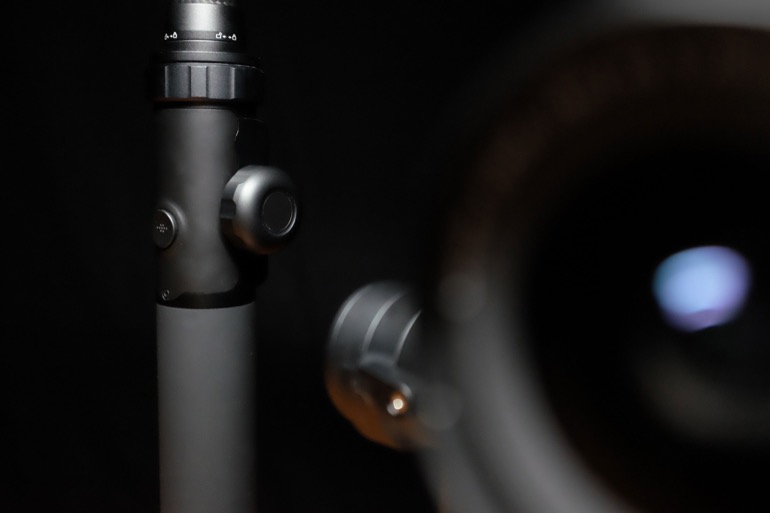
Feiyu Tech Ring Style Gimbal Handle Review
As much as the Feiyu AK4000 (and its siblings AK2000 and AK4500) is a great gimbal, it’s the carbon fiber ring handle that elevates this gimbal into a unique filmmaking tool. The ring is the whole reason we’re interested in this gimbal, and we think it probably should just be part of the standard product offering.
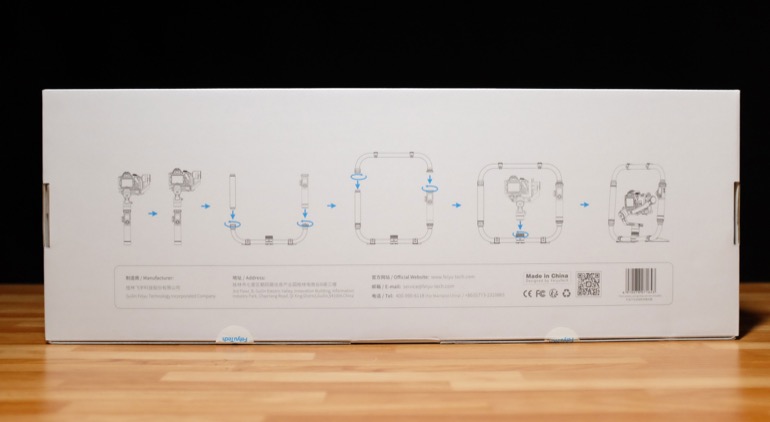
Why a fig rig for a gimbal? If you recall, the original brushless gimbals were built around a ring. For the first couple years of gimbals, this is how everyone used a gimbal. It was stable, allowed for big cameras to be mounted within them, along with accessories to be mounted around the ring. You could set it down or hang it.
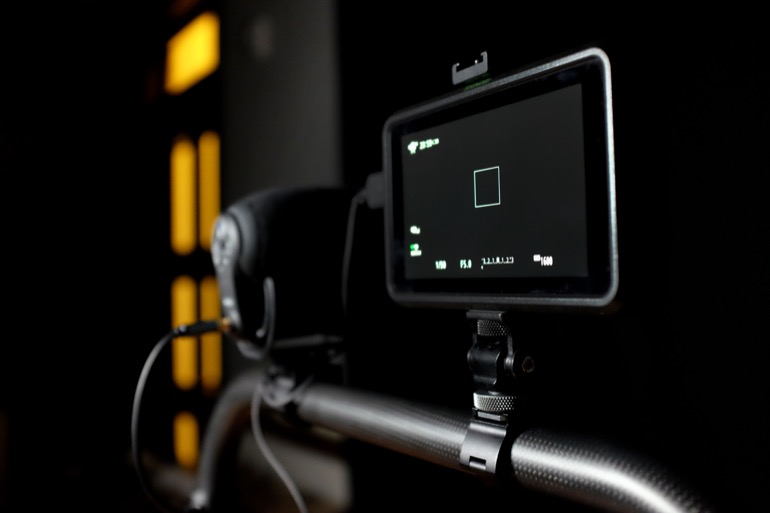
Most of all, the ring is what enabled operators to use a heavy gimbal in a variety of exciting ways. You could hold it a number of different places, you could pass it along to another operator, you could hang it from a heavy duty jib, or attach a safety harness to the top of it while shooting from inside a helicopter.
And then came the broken down gimbals which had two handles, a cross bar, and the motor and camera rig hanging from the bottom. That certainly worked, although it gave every operator an extreme workout because there was only one way to hold it, which meant you would exhaust a certain muscle group without the ability to shift the gimbal weight to a different orientation.
Then came the inverted gimbals, where the camera would sit on top of the gimbal. That made it easier to shoot at eye level, instead of having to hold up your arms in an awkward manner just to get a camera up high enough.
The downside was there was a lot of pressure placed on the pan motor at the bottom, so the camera had to be very well balanced.
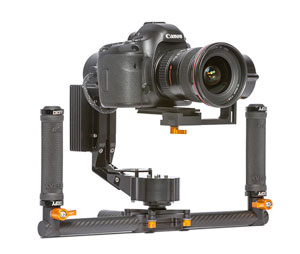
For a long time our favorite gimbal was the Letus Helix Jr, which is a two handle gimbal that is extremely comfortable to hold, in that the handles are moderately close together so your arms can rest, and rotating the handles up or down made for easy tilting. You could also turn the Letus Helix into “briefcase mode” to shoot low angle shots.
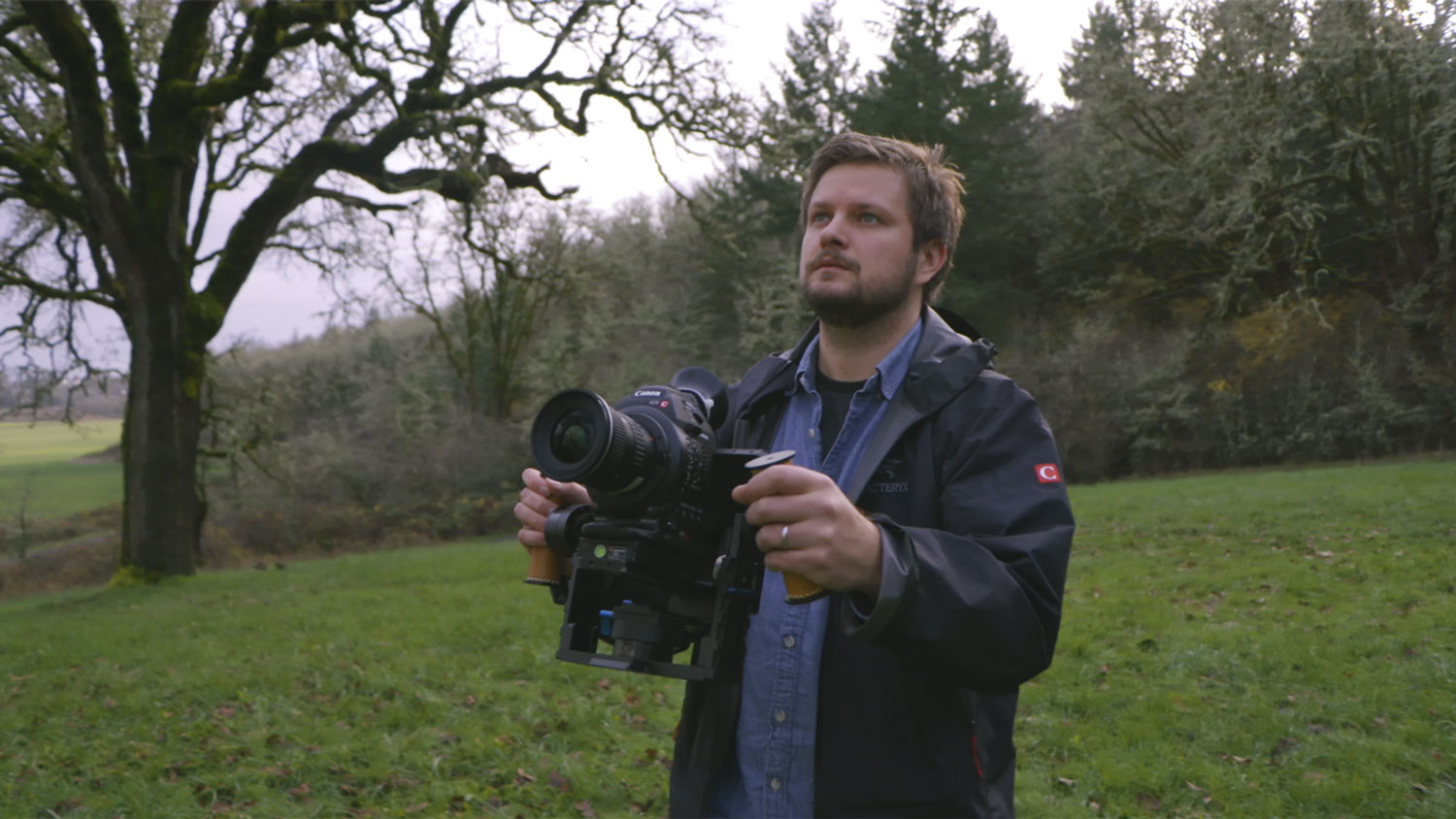
But at that time, gimbals were seperated into two categories - lightweight camera rigs such as tiny mirrorless or even action cams, and heavy duty cinema rigs which required expensive and sophisticated gimbals.
The solution finally came with better motors and higher payloads, but in the form of one handled gimbals. All of a sudden we had gimbals that could support a 5D IV with a big lens, or a C100 or Sony FS5, but now you had to hold everything up with one hand.
Sure there’s been dual handle accessories that have added support bars or handles, but typically that’s made the gimbal rig even bigger and wider and more awkward to hold. The one exception has been the Pilotfly H2, which has an integrated two handed motor in a tiny package. We’ve enjoyed the Pilotfly H2 quite a bit, but the payload and size just wasn’t large enough to handle a large camera like the 1DX, C100, or a DSLR with a standard zoom.
In the last two years, we’ve finally reached some compromises for these heavier cameras. You could snag a DJI Ronin-S, the most functional gimbal out-of-the-box, and bear the weight of it with one hand (or hold it with two hands), and simply be satisfied that you have a gimbal that just works. Or you could enter the ring style world again with the DJI Ronin 2, a monster of a gimbal that is unbelievably expensive and heavy and is way too much gimbal for the average filmmaker.
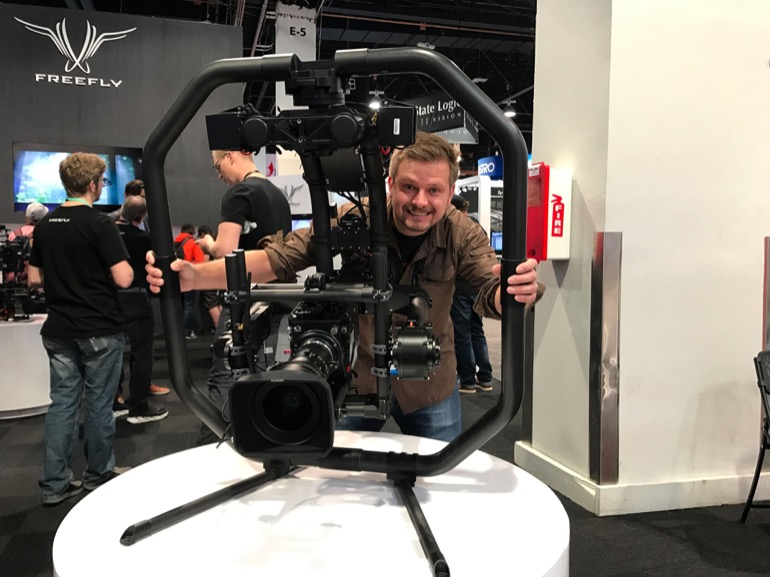
And yet, the return of the ring around the gimbal made the Ronin 2 a desirable tool. Heavy and expensive, yes, but you could realistically hold it and use it. Maybe even without going to the gym. For a little while at least.
The Freefly MOVI Pro added another layer of lust for the gear loving filmmaker. Here was the original gimbal, in a completely updated package, and with that sweet ring. It might not damage your back, but it would certainly hurt your wallet.
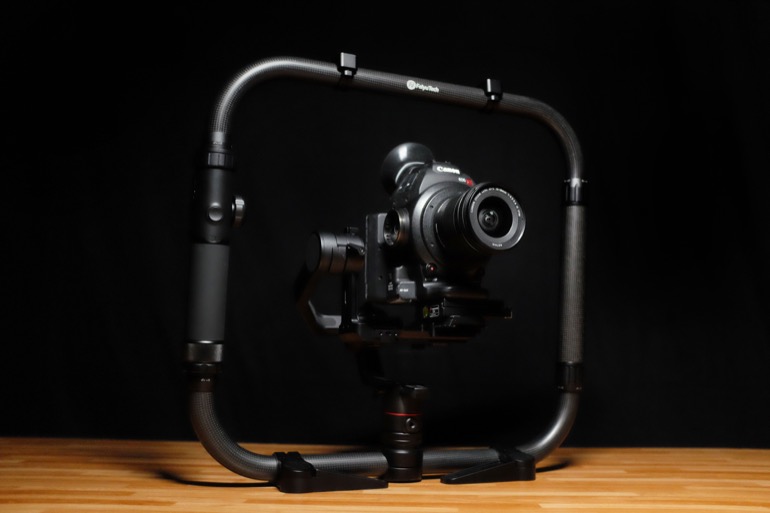
This is why the Feiyu Ring-Style Handle Grip is such an attractive accessory. You take a decent one-handed gimbal and you add this accessory and you have something rivaling a Ronin 2 or MOVI Pro at 1/10th the cost. Maybe not as robust or dependable, but your needs are most likely far less stringent than the operators who are bringing a MOVI Pro on set of major motion pictures.
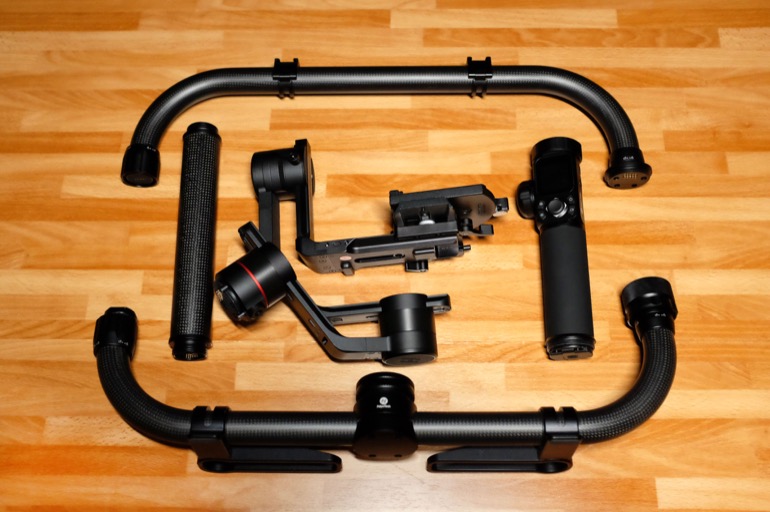
In our use, we found the ring to be well made, super light weight, and fairly easy to put together. We do wish there was a quicker way to attach and detach the rig, so we could throw it in a backpack between locations.
Having to line up and screw in the left and right handles with the top and bottom can take some time, and there’s also the question of whether repeated attaching/detaching might damage the electrical connections between the gimbal and the handles.
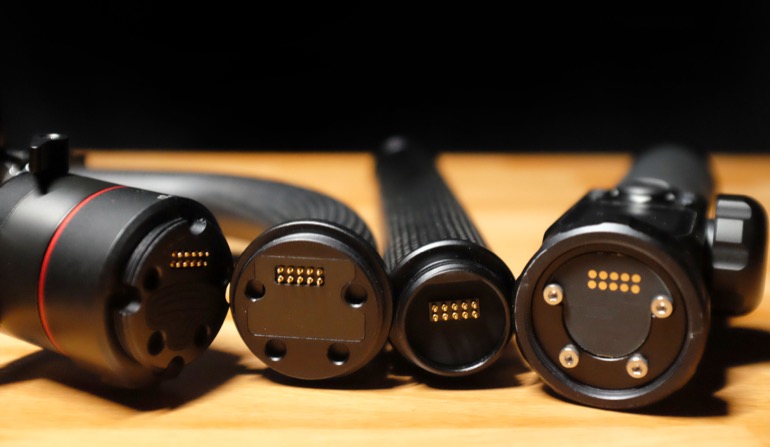
Holding the ring is a beautiful feeling, especially as you can move your hands up and down the arms to vary the load and the muscles you’re using. Sometimes it’s super helpful to grab the rig by the bottom portion, and other times you may want to grab just the top of the rig to carry the gimbal next to you.

Executing low shots is a little more difficult in that you can’t invert the gimbal, but it’s easy to hold the ring from the top, which gets the camera a foot or so off the ground. Perhaps not as low as you could get with an inverted single handle gimbal, but low enough for our purpose. And of course with the ring you can go from a low angle shot to a high angle shot - like a moving jib - with ease.
Mostly what we love about the ring is that it’s such a natural position - holding a camera stabilizer with two hands - which also makes the movements more natural and less dramatic. Try handing a one handed gimbal to a newbie - they immediately start moving the camera all over the place, not knowing what to do. But you hand them a gimbal ring, and they instinctively start capturing smooth and subtle movements.

Another benefit is being able to balance a heavier camera - like the EOS R with a battery grip - and leave a quick release plate on. We use the Manfrotto 394. Then at any moment we can go from shooting handheld or on a monopod or tripod, leave the camera completely in its rigged up state, and snap it into the gimbal. Usually we have an Atomos Shinobi on top of our EOS R as well, so with the AK4000 we can quickly remove the monitor and place it in the cold shoe insert on the ring adapter, and we’re good to go.
We also like to leave a Rode VideoMic Pro+ in the other cold shoe insert. So whenever we put a camera into the ring, we just insert the mic cable into the camera, the VideoMic Pro+ auto detects when the camera is on and turns on the mic, and we’re ready to go.
Ease of use is essential with gimbals. If you have to fumble to attach and rebalance a monitor or microphone or a lens change - forget it. Either you or your shooting crew or the client or the subject will become frustrated long before you get everything setup and running.
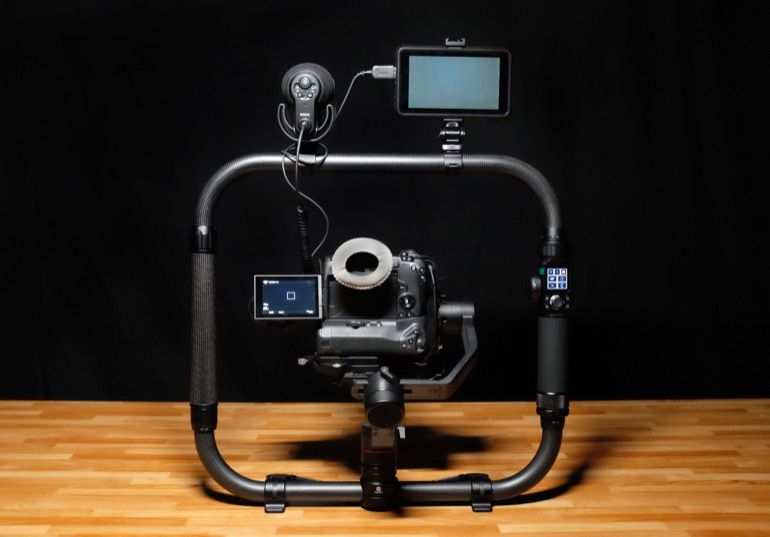
Finally, if you’ve ever used a gimbal before, you know how incredibly difficult it can be to set it down. Either just to let it rest or to balance it. You used to have to bring a C-stand along just to hang your gimbal.
Until one handed gimbals came with tripod stands, your only solution was just to lay the gimbal down in a contorted manner. Even then, you never really feel like your camera and lens are safe when you place a single handed gimbal onto a tabletop. First time that it falls over, you lose a couple years of your life.
The Feiyu Ring-Style Handle without a doubt makes setting down the gimbal a thousand times better than any other gimbal we’ve used before. In fact, you want to use it more, because it’s so easy to bring it along, set it down, pick it up and use it, set it down, and so on. Sometimes it’s the little details that matter. Not the bonus features like focus assist or camera controls, but those little feet that actually work super well at keeping your camera and gimbal rig steady on the floor or table, even if someone bumps it.
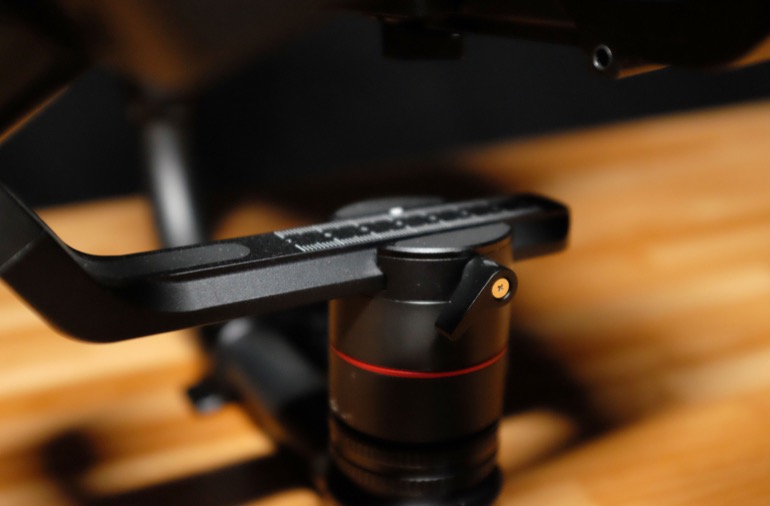
Conclusion
There are so many gimbals available right now, it’s almost impossible to know where to begin. Your camera payload is a good start, but then what? After trying out many, many gimbals over the years, we find that for the most part, many gimbals are similar today. In that they’re all quite good. Yes, we’ve finally hit a point where you can buy any gimbal and if your camera is balanced, then you’re good to go.
But now that most prosumer gimbals are under $1000 and most of us aren’t shopping by price alone, how do you choose? Truth be told, the only way is to try a few gimbals out and see what you like the best. It’s the little details in the user experience that makes the difference for most filmmakers.
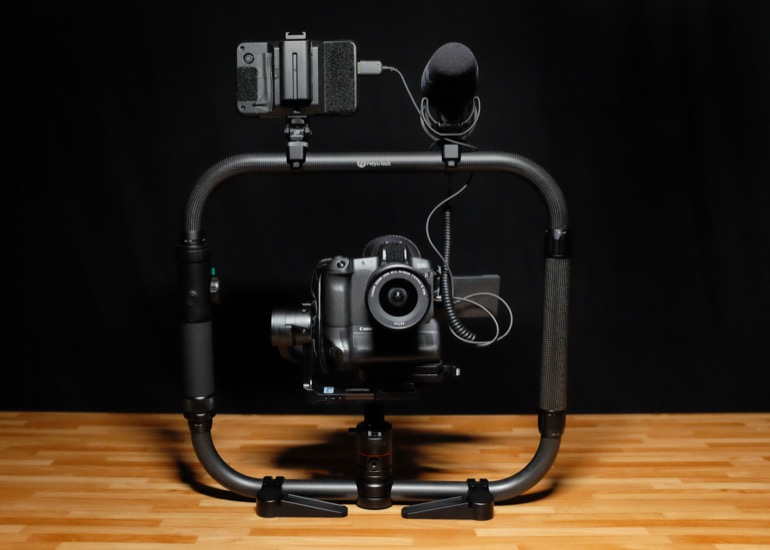
The Feiyu AK series of gimbals is a different story, however, and it’s mostly because of the ring-style dual handle accessory. This thing takes a pretty good gimbal like the AK4000 and makes it a great gimbal. The fact that it works with the AK2000 and AK4500 is even better - there’s options depending on your camera and lens weight.
If DJI had come out with a ring style accessory for the Ronin-S, there would be no question that everyone would rush out and get one. But DJI has to protect their very expensive Ronin 2 - which has the ring. Feiyu, however, doesn’t have to protect an advanced gimbal product, and so here it is, a fully functional fig rig stabilizer for cameras up to 10 lbs for under $1000.

As with any electronic product, there are always some customers who end up with a faulty this or that piece, so you’ll find some negative reviews out there from people who weren't completely satisfied. And that’s true of any gimbal. But there’s also a certain learning curve with gimbals that includes balancing and use, and you don’t know if a customer review has that basic understanding.
So if you’re curious about the AK series of gimbals, with the ring-style handle, the only way to know if it’ll work for you is to try it out. You’ll know quickly if it works or doesn’t work for you and your camera. If it doesn’t, return it. If it does, you might have a perfectly usable pro gimbal rig that’ll last you many years.
Feiyu Tech AK4000 gimbal with Ring-Style Dual Handle Kit
